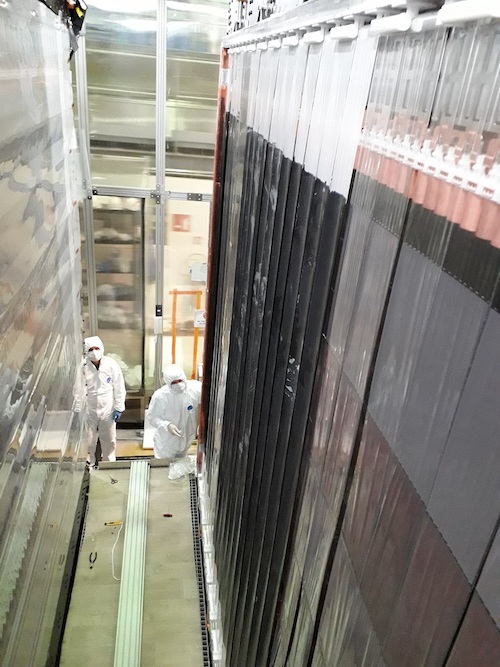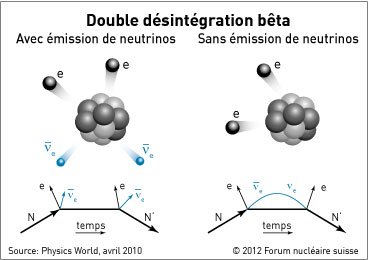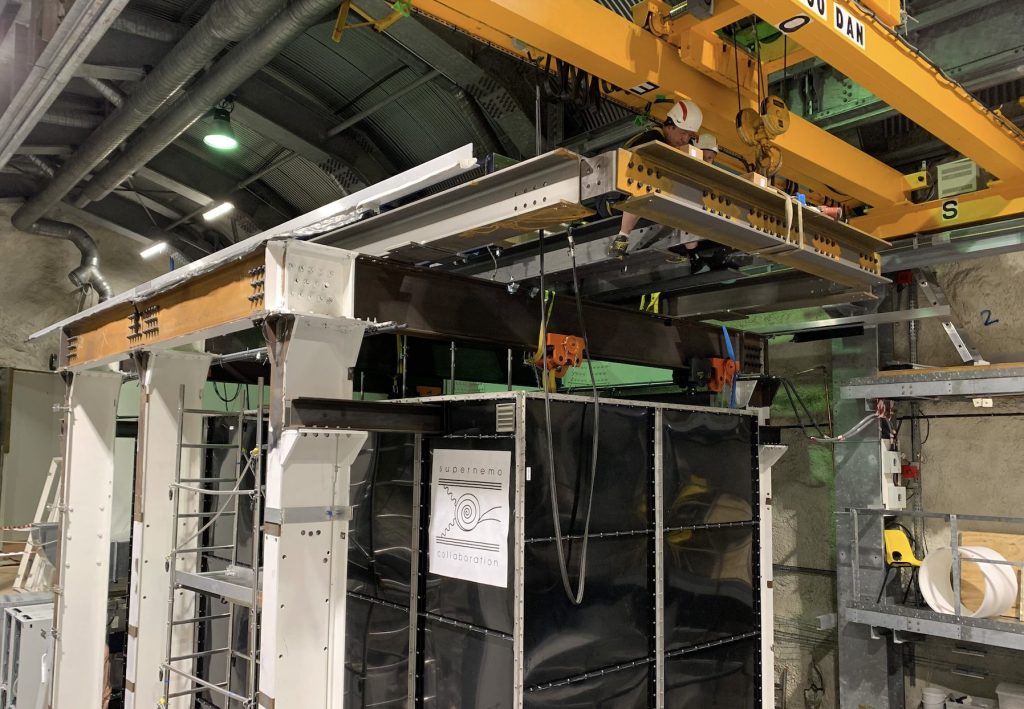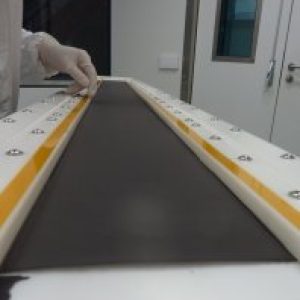SuperNemo

The SuperNEMO detector is due to be completed in 2024 in the Modane underground laboratory, enabling it to start collecting data. Its aim is to demonstrate the feasibility of measuring the rare process of double beta decay without neutrino emission, with a level of sensitivity and background rejection never before achieved with this type of detector. SuperNEMO is based on a detection technique that combines a trajectograph and a calorimeter to allow the complete measurement of the kinematics of the electrons produced by the process in question and thus determine its properties. This technique, in which thin sheets of double beta emitting source are sandwiched between volumes of drift chambers and a calorimeter, offers a number of advantages over other existing approaches, particularly for the identification and rejection of background noise.
The SuperNEMO demonstrator will explore the potential of this technique, using just over 6 kg of Selenium as a double beta source. The LAPP group played an active role in the construction of this detector, helping to build the sources, develop the slow control system and analyse the data.




Activities du LAPP
Development of SuperNEMO reconstruction and simulation software
Setting up a radon study
Preparation of the commissioning phase
Participation in the installation of the detector at the Modane Underground Laboratory site in a low-radioactivity, clean-room environment
Collaboration
The international SuperNEMO collaboration is made up of scientists from 20 institutes in 8 countries, including : Czech Republic, France, England, Japan, Russia, Slovakia, Ukraine and the United States. The French IN2P3 laboratories involved in SuperNEMO are CPPM, IJCLab, LPC Caen, LP2I Bordeaux and LAPP.
Actualités
- All
- Science

On October 3 2017, after 4 years of Research & Development and production, the last SuperNEMO (Neutrino Ettore Majorana Observatory)


